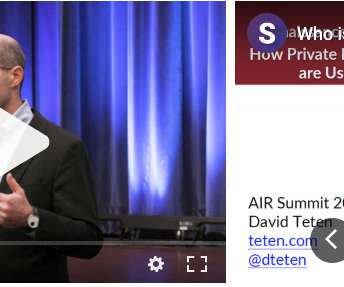How Private Equity and Venture Capital Investors Are Eating Their Own Dogfood
David Teten
SEPTEMBER 23, 2017
Private equity and venture capital investors are copying our sisters in the hedge fund and mutual fund world: we’re trying to automate more of our job. The most visible evidence of the trend towards automation is an increasing number of engineers working at venture capital and private equity funds.






































Let's personalize your content